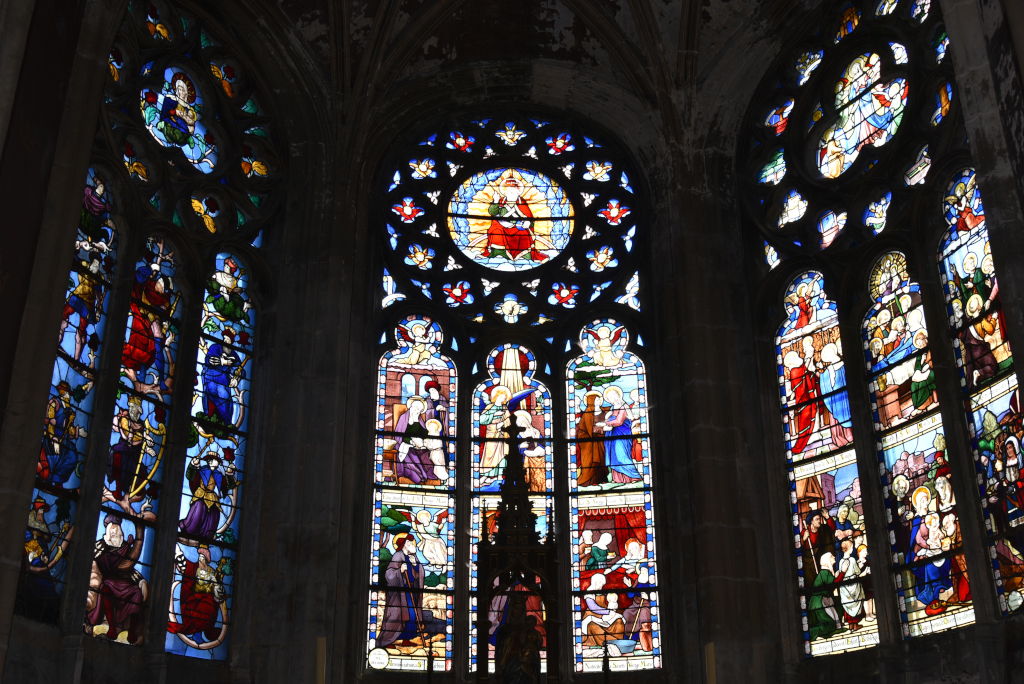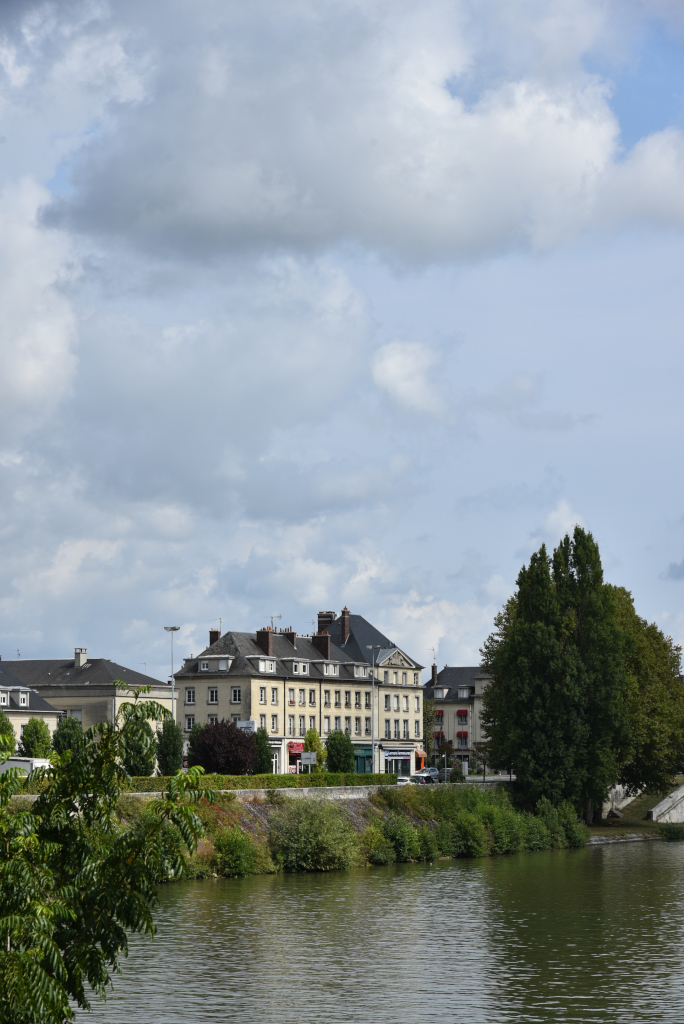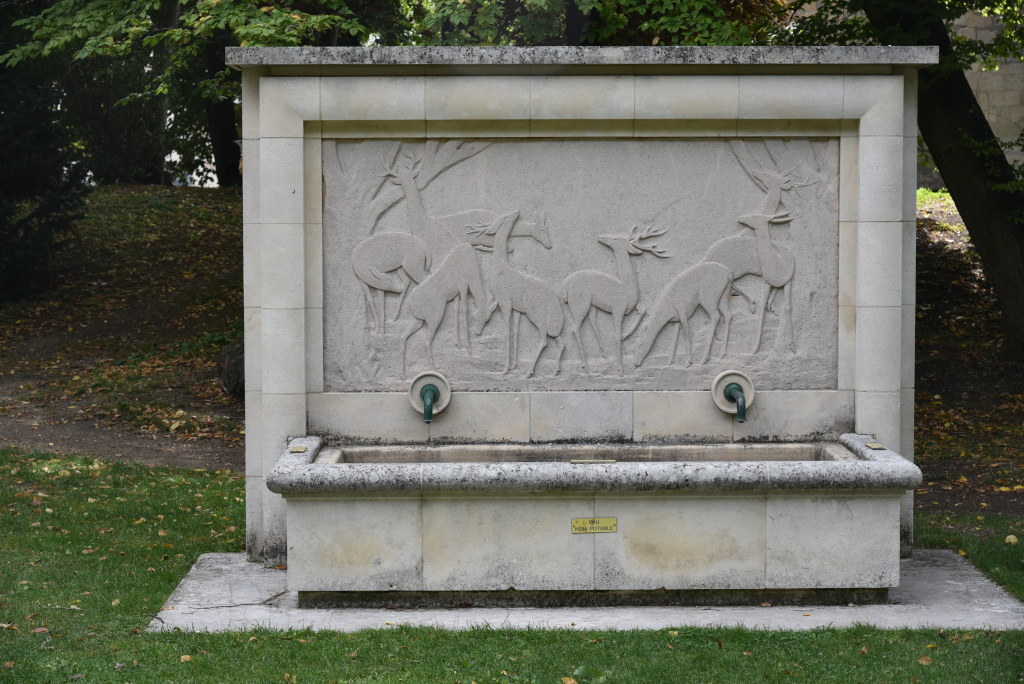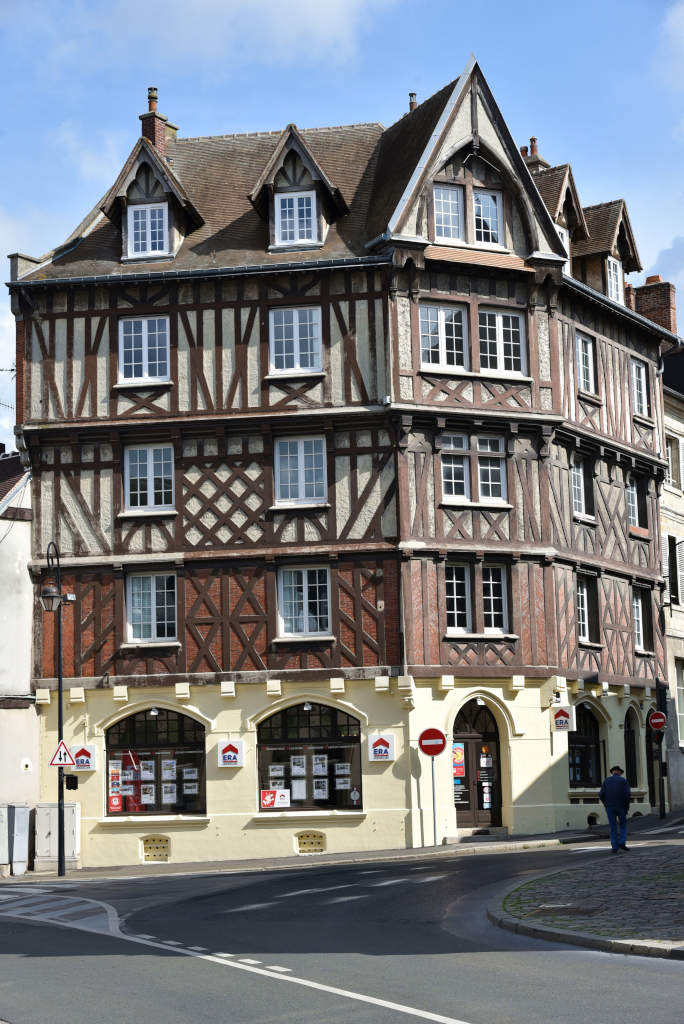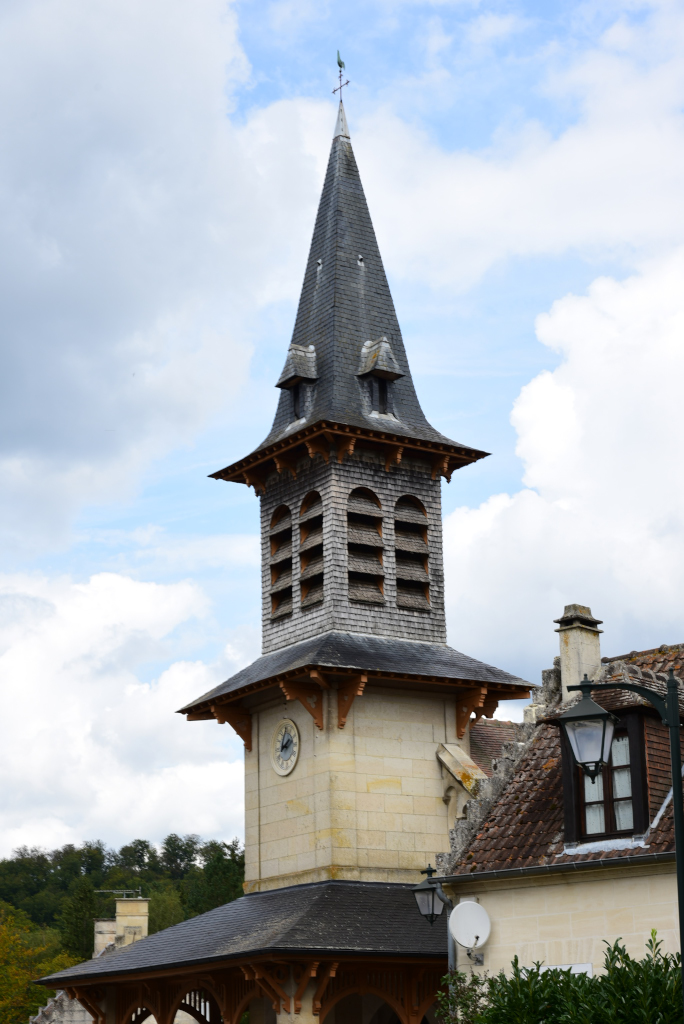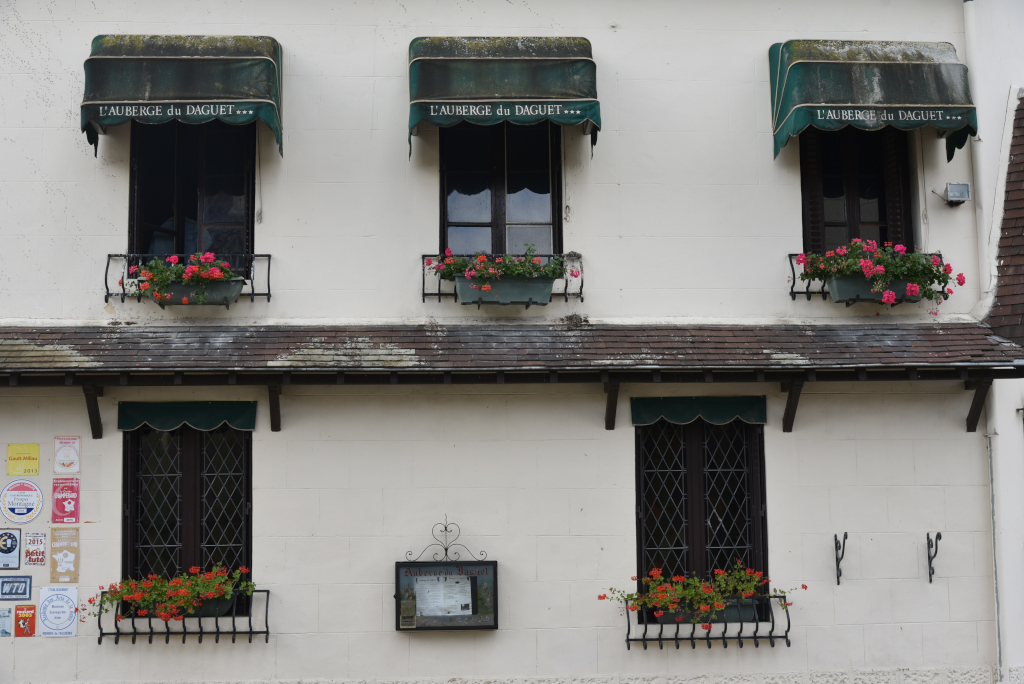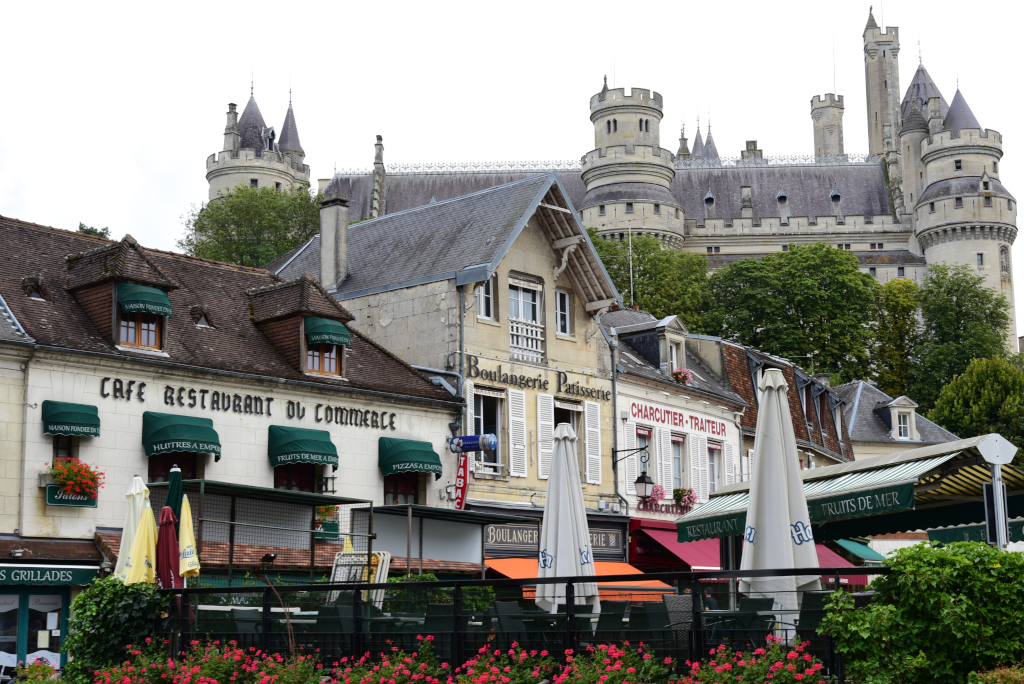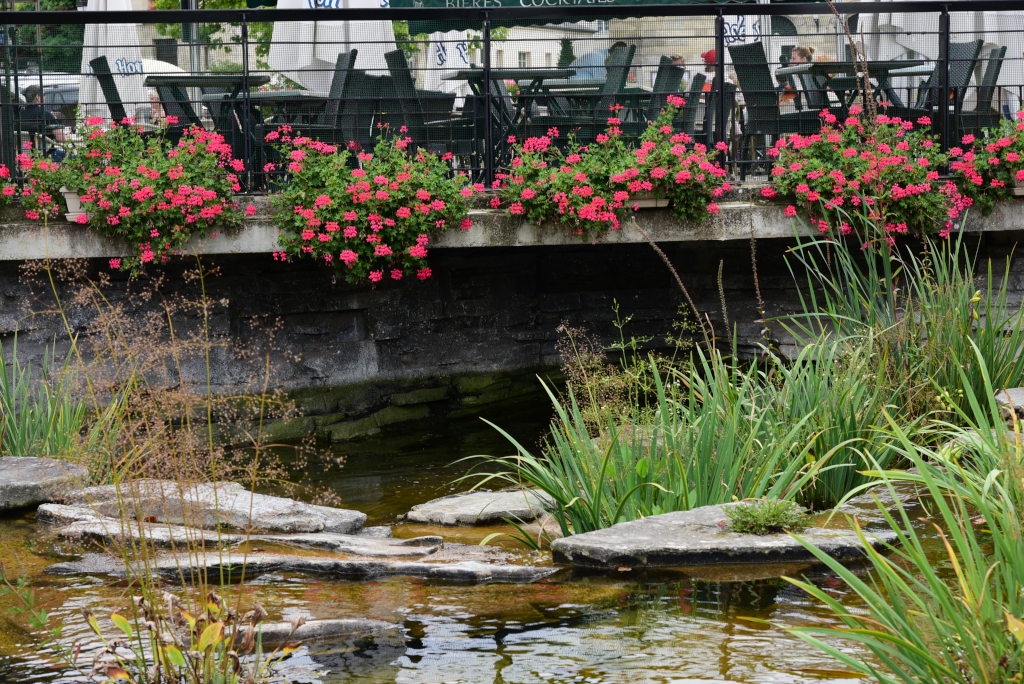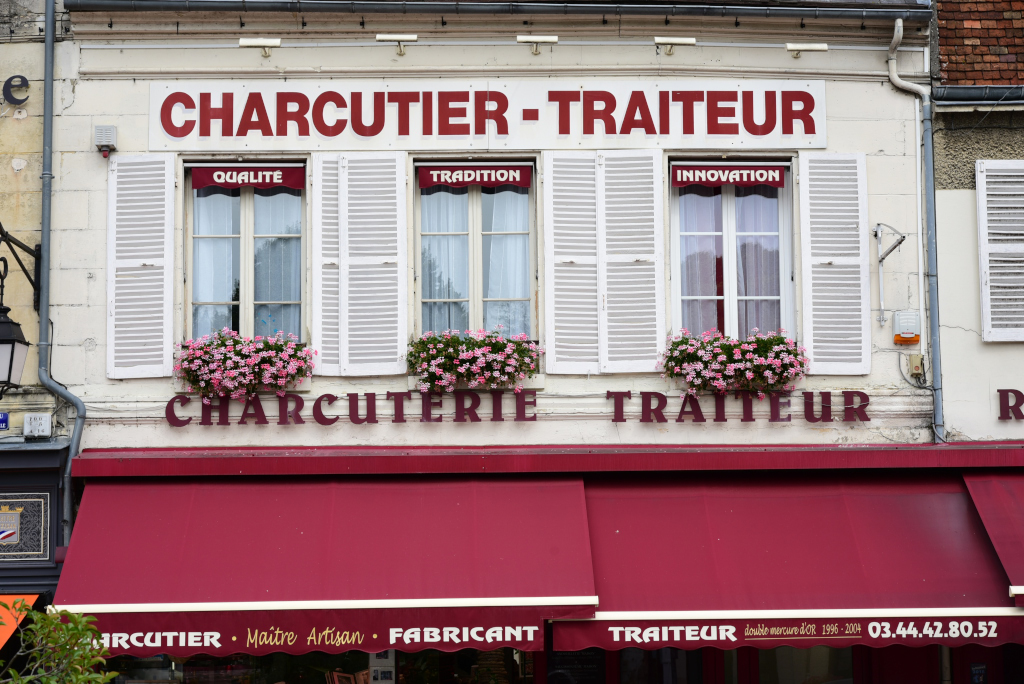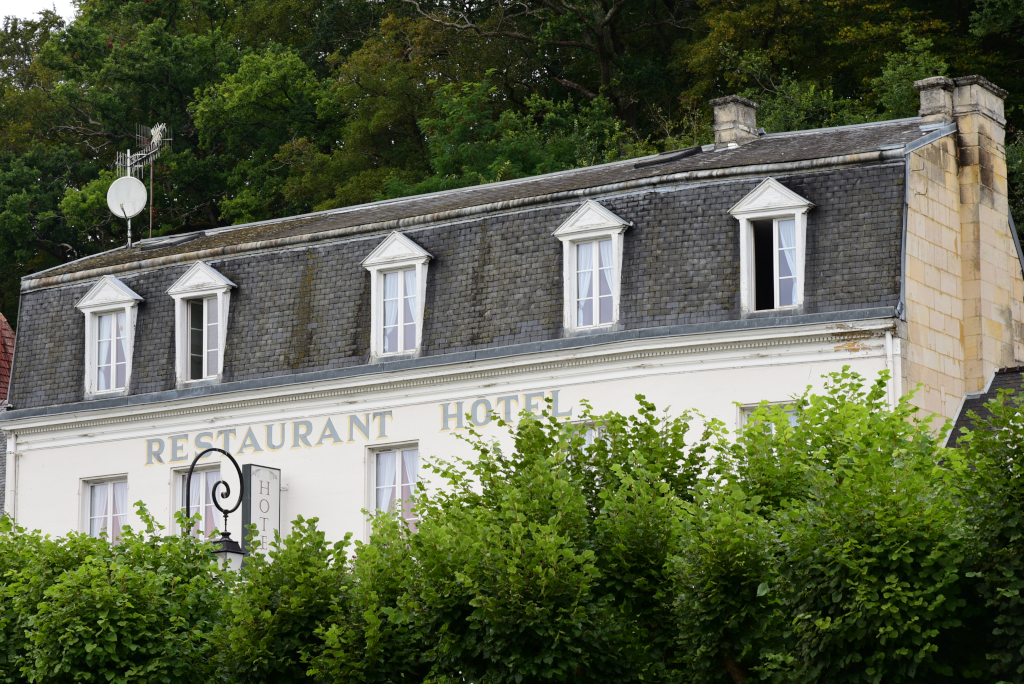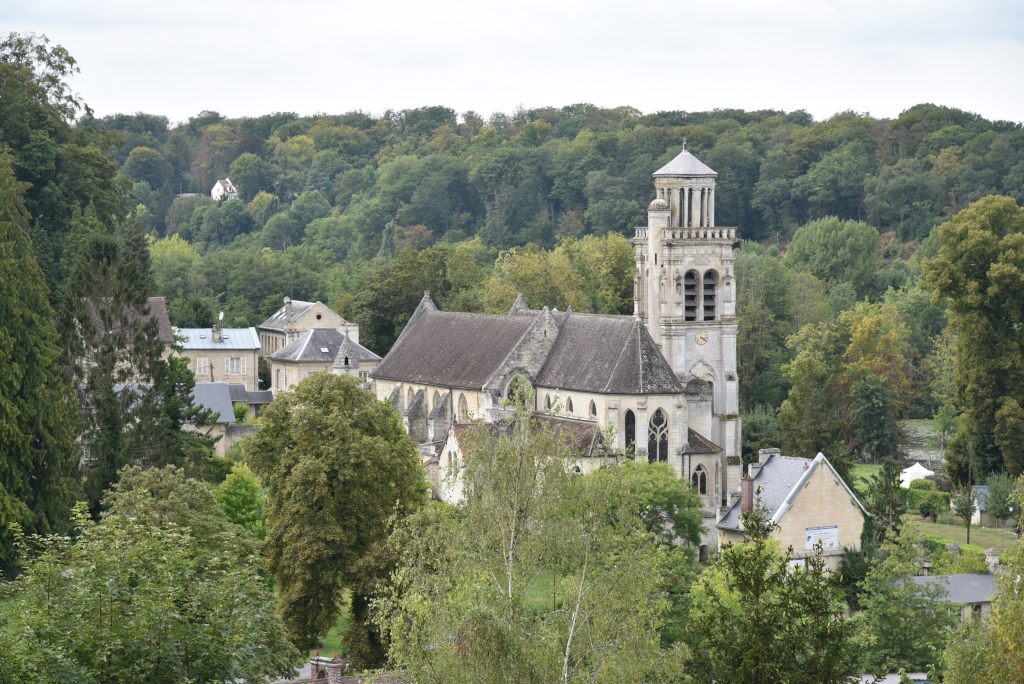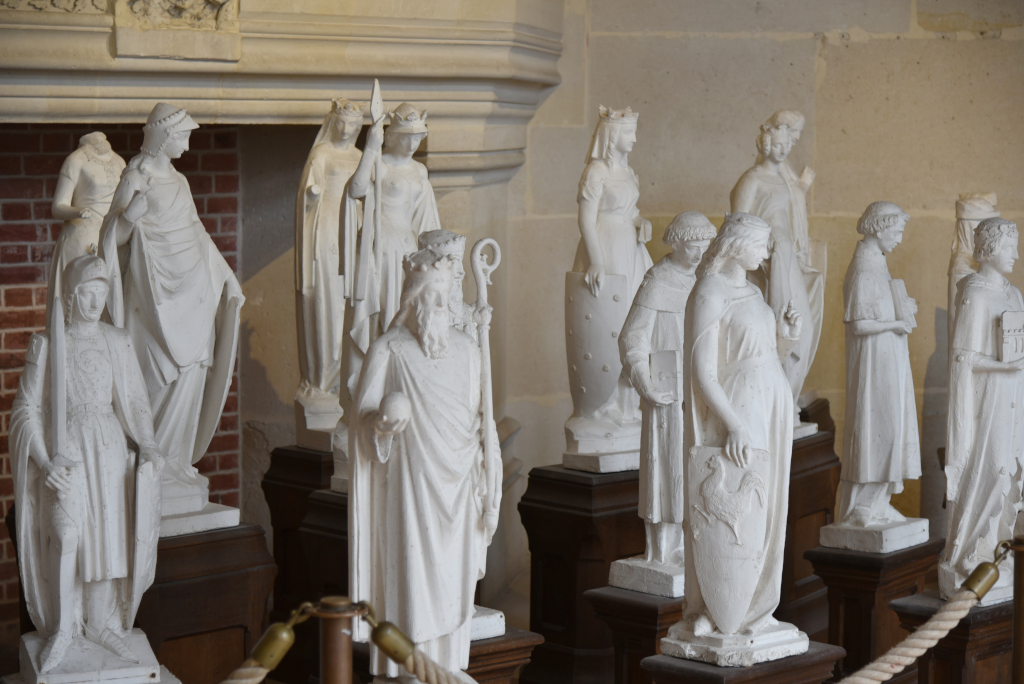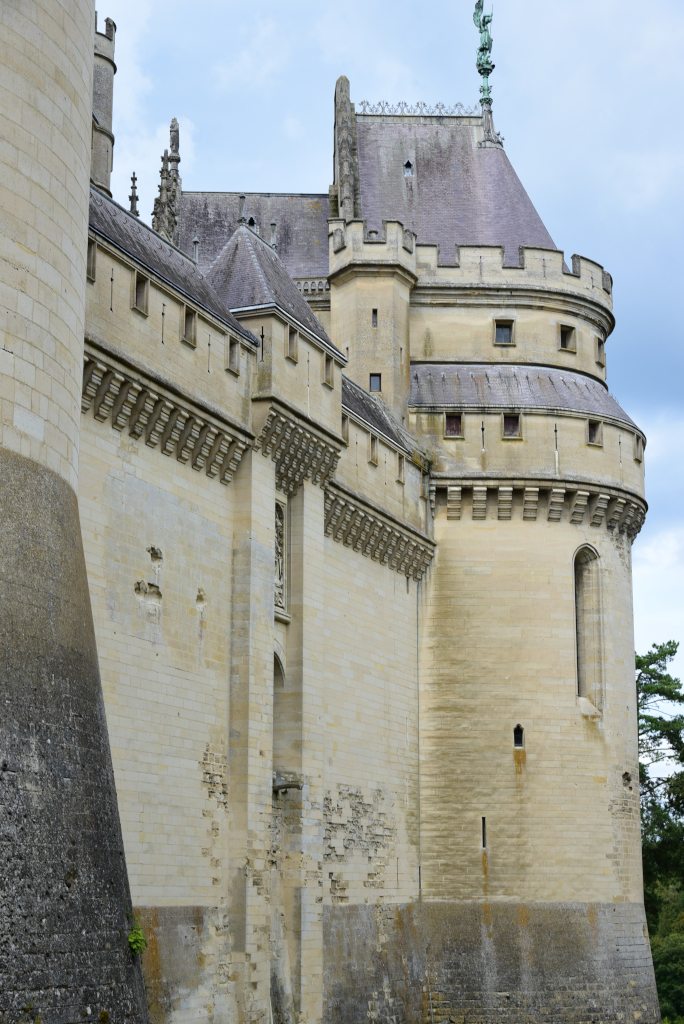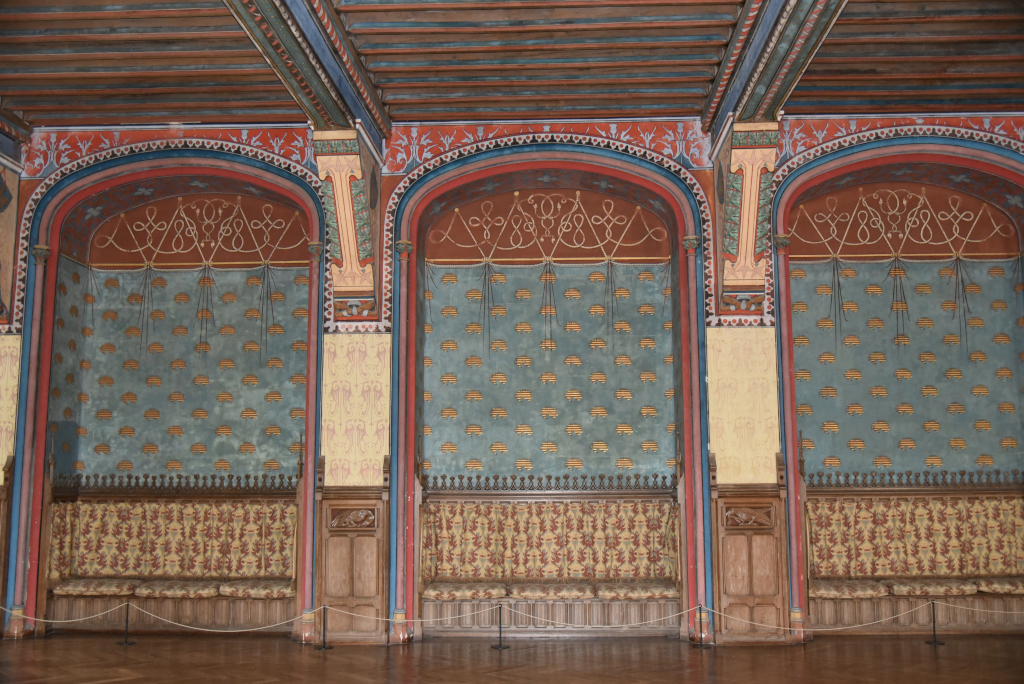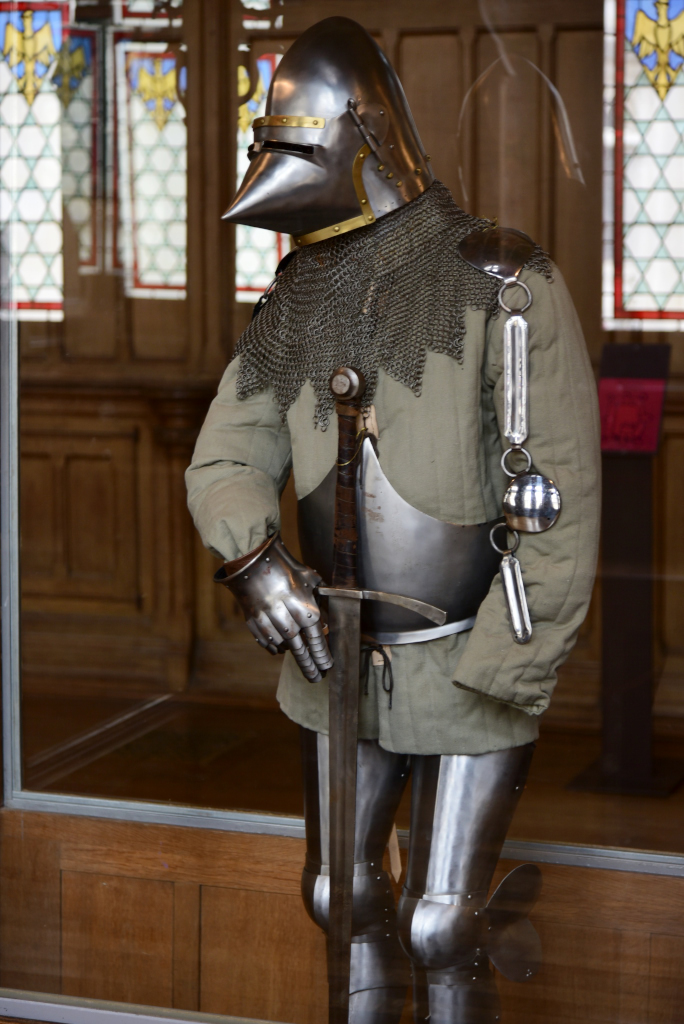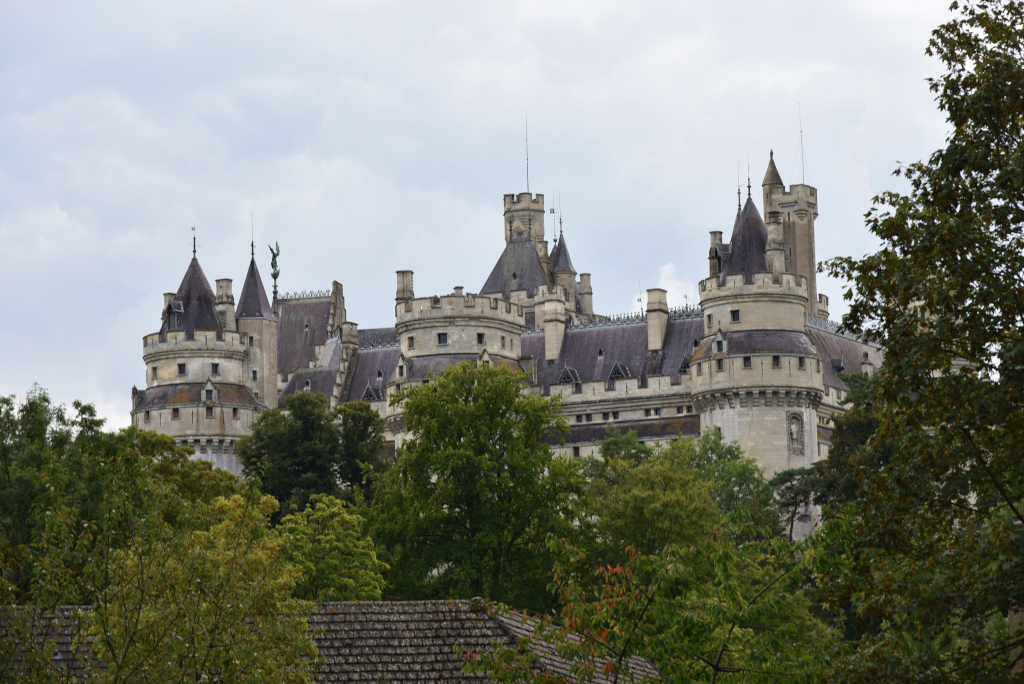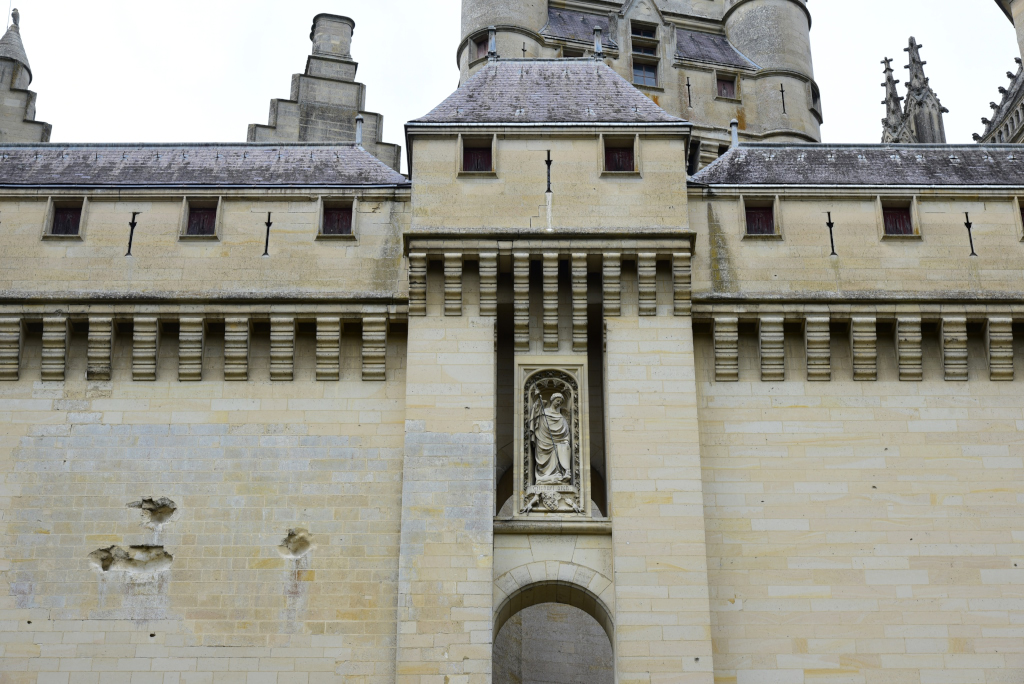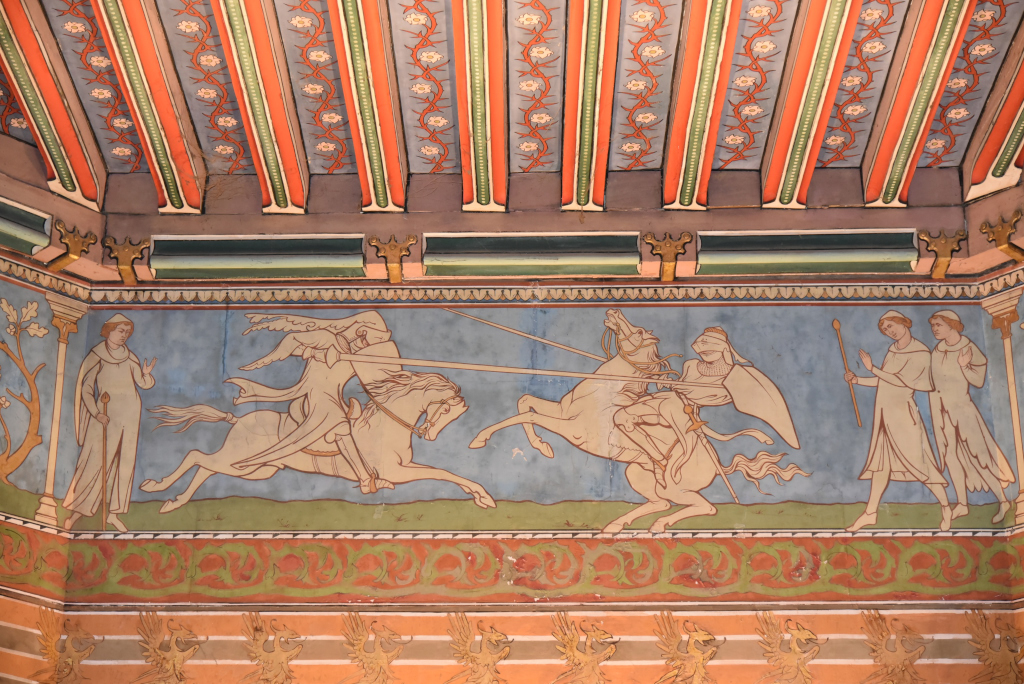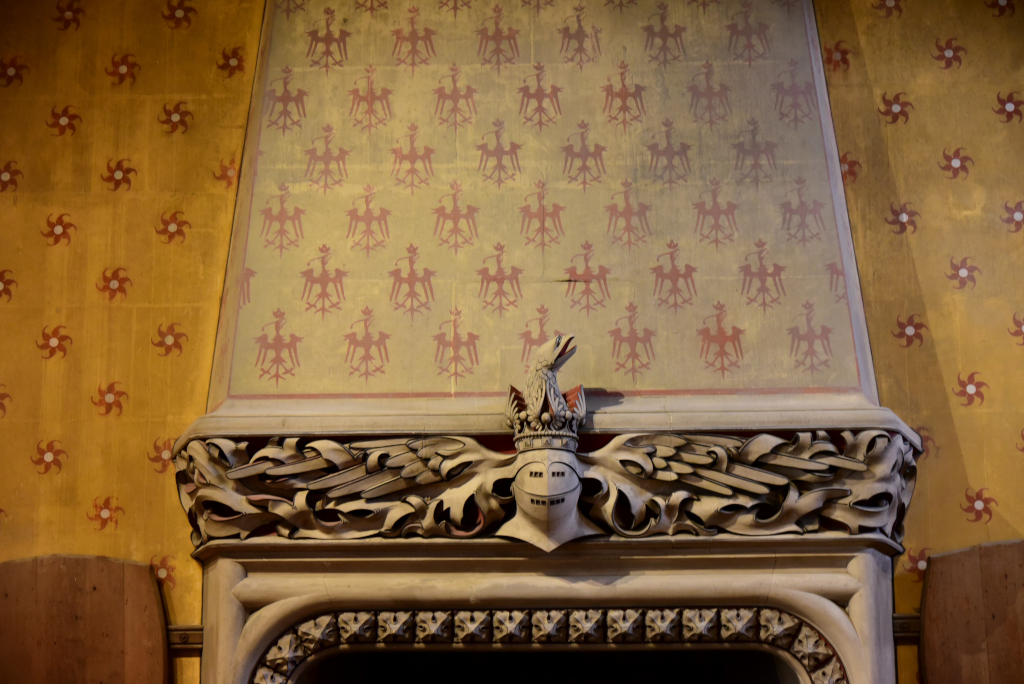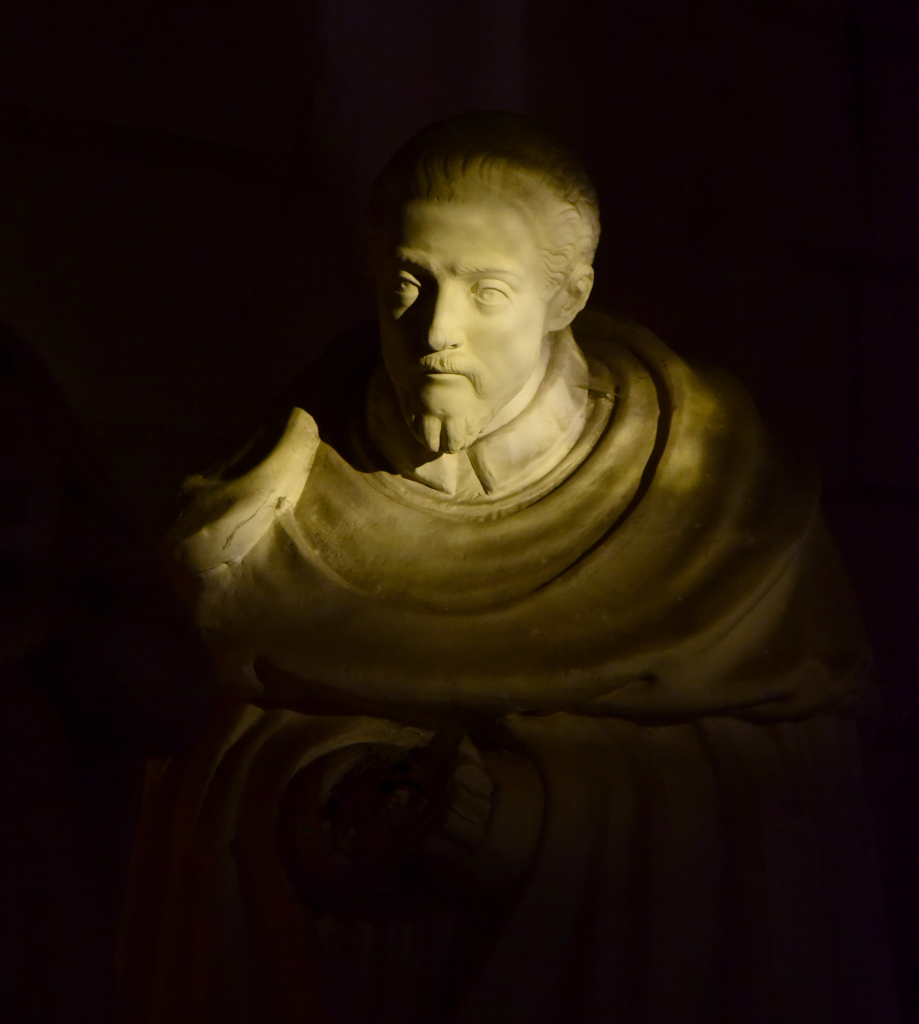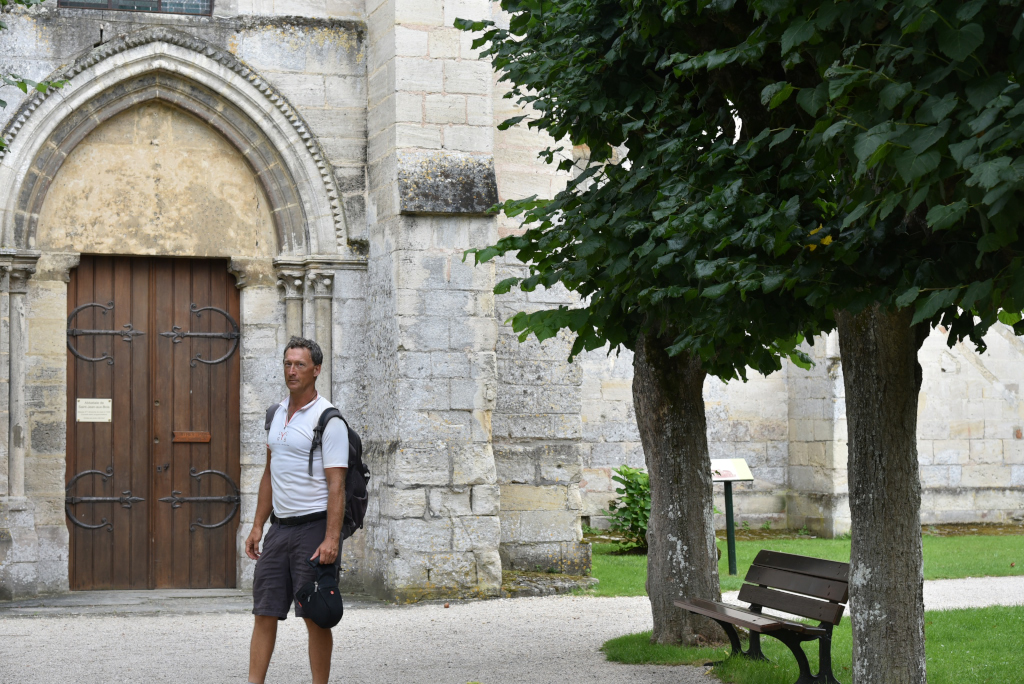August 30, 2018
Conveniently located immediately across the street from the medieval, half-timbered building I am staying in in Compiègne lies the small but sublime Gothic Saint-Antoine de Compiègne. As with the town’s other parish church, Saint-Jacques, Saint-Antoine was founded in 1199 and was closely linked to the Saint-Corneille Abbey. The church was built during the first half of the 13th century, and profoundly transformed in the 16th century, largely as a result of the damage suffered during the Hundred Years War.
The origins of the parish and the Saint-Antoine church are similar to those of the parish and the Saint-Jacques church. The whole city of Compiègne is closely linked to the Saint Corneille Abbey founded in 876 and endowed with enormous privileges by Charles II the Bald. Saint-Antoine did not depend on the bishop of Soissons but directly with the pope. Unlike most abbey churches, the church was open to any locals who wished to worship there.
The interior of the church appears to be of great stylistic homogeneity and belongs for the most part to the flamboyant Gothic style, except for the last two bays of the nave and the transept, which retain traces of the thirteenth century. The facade, choir and ambulatory of the church date to the sixteenth century. With their richly carved character and finesse of form, these are the most remarkable parts of the church. On the other hand, the nave and its aisles are rather monotonous and show little stylistic research.
Returning to the history of the city of Compiègne: during the fourteenth century, given its insurmountable financial difficulties, Compiègne gave up its communal charter, so that the king appointed a provost to administer the city and deliver justice, with the help of a mayor also appointed by the king and representatives of the bourgeoisie. Until the end of the fourteenth century, French kings often united the States-General at Compiègne. In 1374, Charles IV had a new castle built on the location of the existing one, making the city the royal residence.
During the Hundred Years War, Compiègne was besieged and taken several times by the Burgundians. From the time of the coronation of Charles VII, the city became loyal again to the king of France. On her quest to liberate the city from the yolk of the English in 1430, Joan of Arc fell into the hands of the Burgundians, and was sold to English. This siege resulted in major destruction, a decline in the population and an impoverishment of the inhabitants.
During the wars of religion, Compiègne remained a Catholic, faithful to the kingship and benefited in return from some advantages on the part of the sovereigns. The edict of Compiègne of 1547 represente one of the first stages of the repression against the Huguenots.
Located in the depths of the Compiègne forest, roughly halfway between Compiègne and Pierrefonds, Vieux-Moulin is the image of small-town French charm, the exquisite bungalows and townhouses framed against the dense green forest and brilliant cerulean sky. The vista of modest stone houses with peaked roofs is interrupted by occasional eruptions of brilliantly coloured flowers as well as a smattering of half-timbered structures and turn-of-the-century brick mansions, all culminating on the small church at the centre of town, as well as the unassuming but elegant Auberge du Daguet.
The indisputable attraction of Pierrefonds is the enormous neo-Gothic castle that towers over the town, although the town itself is eminently charming as well, drenched in green and laid out along the side of a small lake. Visitors may traverse the calm lake in whimsical paddle boats, and enjoy the views of the pretty town, almost overwhelmed by the gargantuan castle towering overhead.
Pierrefonds castle is a largely neo-Gothic structure, rebuilt by Viollet-le-Duc in the nineteenth century. The castle is in immaculate condition, largely due to its relatively modern construction. Given its fantastic medieval appearance and size, also one of the most significant tourist attractions of the region.
The contemporary castle at Pierrefonds is only the last in a series of defensive structures on the site that dates back to the Middle Ages. The trajectory of its past mirrors that of the tumultuous history of the broader region of northern France. The earliest castle was built by the lords of Pierrefonds in the twelfth century, then in the late twelfth century it passed to King Philip Augustus, and then subsequently remained in the French royal domain. The castle was almost entire rebuilt by Louis of Orleans at the end of the 14th century.
The castle was occupied by partisans affiliated with the Duke of Burgundy at the beginning of the 15th century, although shortly thereafter it was returned to the Duke of Orleans. Following the capture of his son Charles d’Orleans in 1415 at Agincourt by the troops of Henry V in the Hundred Years War, Nicolas Bosquiaux, captain of Pierrefonds, resisted English incursion until 1420, when he finally capitulated to forces loyal to England. Pierrefonds subsequently remained a Burgundian base until 1436.
From 1515, the duchy of Valois (where Pierrefonds is located) remained loyal to the French crown until the reign of Louis XIII. Towards the end of the 16th century, it was occupied by opponents of Henry of Navarre. In 1595 the castle was entrusted to Antoine d’Estrée, governor of the Île-de-France, and the mistress of Henri IV.
Pierrefonds castle was besieged and taken by the troops of the governor of Compiegne in 1617, directed Louis XIII’s Secretary of State by Richelieu, and in May 1617 it was decided to demolish much of the castle. By the 18th century, the remains of the castle were effectively abandoned, then sold as national property. Napoleon I purchased the castle property in 1813 as well as the outbuildings of the Compiègne forest. The ruins of Pierrefonds castle experienced somewhat of a Renaissance during the nineteenth century craze for medieval architectural heritage.
Under Napoleon III, Viollet-le-Duc was commissioned to undertake the restoration of Pierrefonds castle in 1857. Construction began in 1858, but within several years, the restoration project had expanded to become an imperial residence, requiring the castle to be completely rebuilt. By 1885, the work was stopped, due to the exhaustion of funds and death of Viollet-le-Duc.
The restored castle combines various architectural styles, but doesn’t strictly adhere to the historic style of the original building. While the exterior structure corresponds to the high Gothic, the inner courtyard features Renaissance galleries. Viollet-le-Duc created an ensemble that seemed as indicative of early 20th century Art Nouveau as medieval Gothic, also attempting to bridge the castle’s medieval heritage with the imperatives of court life at the time of Napoleon III.
Another small and eminently charming community set between Compiègne and Pierrefonds, Saint-Jean-aux-Bois features sprawling and comfortable summer chalets, as well as opulent and colourful floral beds littering the beautiful town. Saint-Jean centers on the Notre-Dame-et-Saint-Jean-Baptiste abbey that was built by Queen Adelaide, wife of King Louis le Gros in 1152, and dedicated to the Benedictine order. The abbey is characterized by a rustic Gothic aesthetic, with limited decorative features.
(Narrative excerpted from Wikipedia)

























